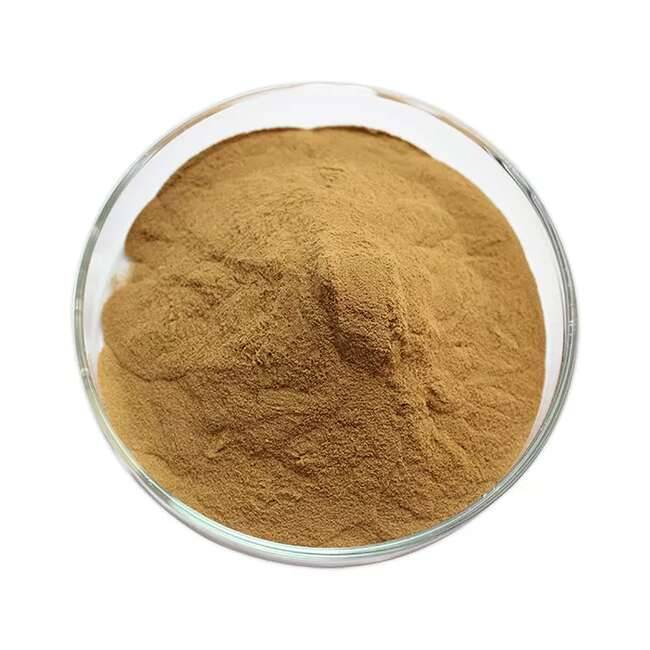The Potential Application of Natural Ingredient Ivy Extract Hederagenin in Health Products
As a leading company in the field of plant extracts, Green Spring Technology has always been committed to discovering natural active ingredients with application potential. Recently, based on significant scientific research advancements, we are proud to introduce our high-purity Hederagenin raw material—a natural pentacyclic triterpenoid compound derived from Chinese ivy and other plants. This component, with its unique structure and biological activity, is increasingly becoming a hot raw material for product innovation in the health supplements, functional foods, and beverages industries.
Hederagenin is widely found in plants such as Chinese ivy, Cynanchum, and Patrinia, typically existing in the form of saponins, and possesses excellent development and application potential. Green Spring Technology employs advanced extraction and purification processes to ensure the raw material’s consistent purity and superior quality, meeting multiple international standards.

We offer comprehensive technical documentation, compliance support, and customised application solutions to help businesses develop next-generation differentiated health products.
As research into hederagenin derivatives (such as α-hederagenin) continues to deepen, multiple experiments have shown that this compound exhibits potential activity in cellular metabolism and oxidative stress-related mechanisms, opening new directions for functional ingredient applications.
Based on existing scientific research, Green Spring Technology has officially launched a standardised ivy extract powder with a stable content of 5% hederagenin, the main active ingredient. This raw material demonstrates potential application value in multiple functional areas, including respiratory health, joint comfort, liver and nervous system support, and metabolic regulation, making it suitable for the development and formulation upgrades of dietary supplements, functional foods, and beverages.
Green Spring Technology remains committed to science-based research, strictly adhering to international standards such as EP, USP, and JP to ensure consistent purity, accurate active ingredient content, and rigorous quality control for every batch of raw materials, fully meeting export market regulatory requirements. We also offer customised raw material solutions tailored to specific customer needs, including different specifications and stability-optimised formulations, to provide reliable support for your product innovation. Discover Our Comprehensive Compliant and Consistent Standardized Ivy Extract Ingredient Solutions.
We invite health supplement and functional food companies, as well as R&D experts, to contact Green Spring Technology to obtain samples, technical documentation, and compliance files for Ivy Extract (5% Hederagenin), and collaborate with us to create the next generation of scientifically trusted health products! Please contact us at helen@greenspringbio.com or WhatsApp: +86 13649243917
Reference
[1]Zeng J,Huang T,Xue M.et al.Current knowledge and development of hederagenin as a promising medicinal agent:a comprehensive review [J] . RSC Adv , 2018 , 8(43) : 24188-24202 . DOI : 10 . 1039/ c8ra03666g.
[2]Zhang D , Sun J , Yang B , et al. Therapeutic effect of tetrapanax papyriferus and hederagenin on chronic neuropathic pain of chronic constriction injury of sciatic nerve rats based on KEGG pathway prediction and experimental verification[J] . Evid Based Complement Alternat Med , 2020 ,2020 :2545806. DOI : 10. 1155/2020/2545806.
[3]Li Y , Dong J , Shang Y , et al. Anti-inflammatory effects of heder- agenin on diabetic cardiomyopathy via inhibiting NF-κB and Smads signaling pathways in a type-2 diabetic mice model[J] . RSC Adv , 2019 , 9(45) : 26238-26247 . DOI : 10 . 1039/c9ra02043h .
[4]Ma W , Huang Q , Xiong G , et al. The protective effect of heder- agenin on pulmonary fibrosis by regulating the Ras/JNK/NFAT4 axis in rats[J] . Biosci Biotechnol Biochem , 2020 , 84 (6) : 1131 -1138 . DOI : 10 . 1080/09168451 . 2020 . 1721263 .
[5]Wang L , Zhao M . Suppression of NOD-like receptor protein 3 inflammasome activation and macrophage M1 polarization by heder- agenin contributes to attenuation of sepsis-induced acute lung injury in rats[J] . Bioengineered , 2022 , 13 (3 ) : 7262-7276 . DOI : 10 . 1080/21655979 . 2022 . 2047406 .
[6]Lee CW , Park SM , Zhao R , et al. Hederagenin , a major component of clematis mandshurica ruprecht root , attenuates inflammatory responses in RAW 264 . 7 cells and in mice [ J] . Int Immunop- harmacol , 2015 , 29 ( 2 ) : 528-537 . DOI : 10 . 1016/j . intimp . 2015 . 10 . 002 .
[7]Kim GJ , Song DH , Yoo HS , et al. Hederagenin supplementation alleviates the pro-inflammatory and apoptotic response to alcohol in rats[J] . Nutrients , 2017 , 9(1) : 41 . DOI : 10 . 3390/nu9010041 .
-
Prev
Apple Extract 80% Polyphenols Enhances Natural Antioxidant Product Formulations
-
Next
Exploring the Potential of Ivy Leaf Extract Hederagenin in Functional Food Formulations


 English
English French
French Spanish
Spanish Russian
Russian Korean
Korean Japanese
Japanese




